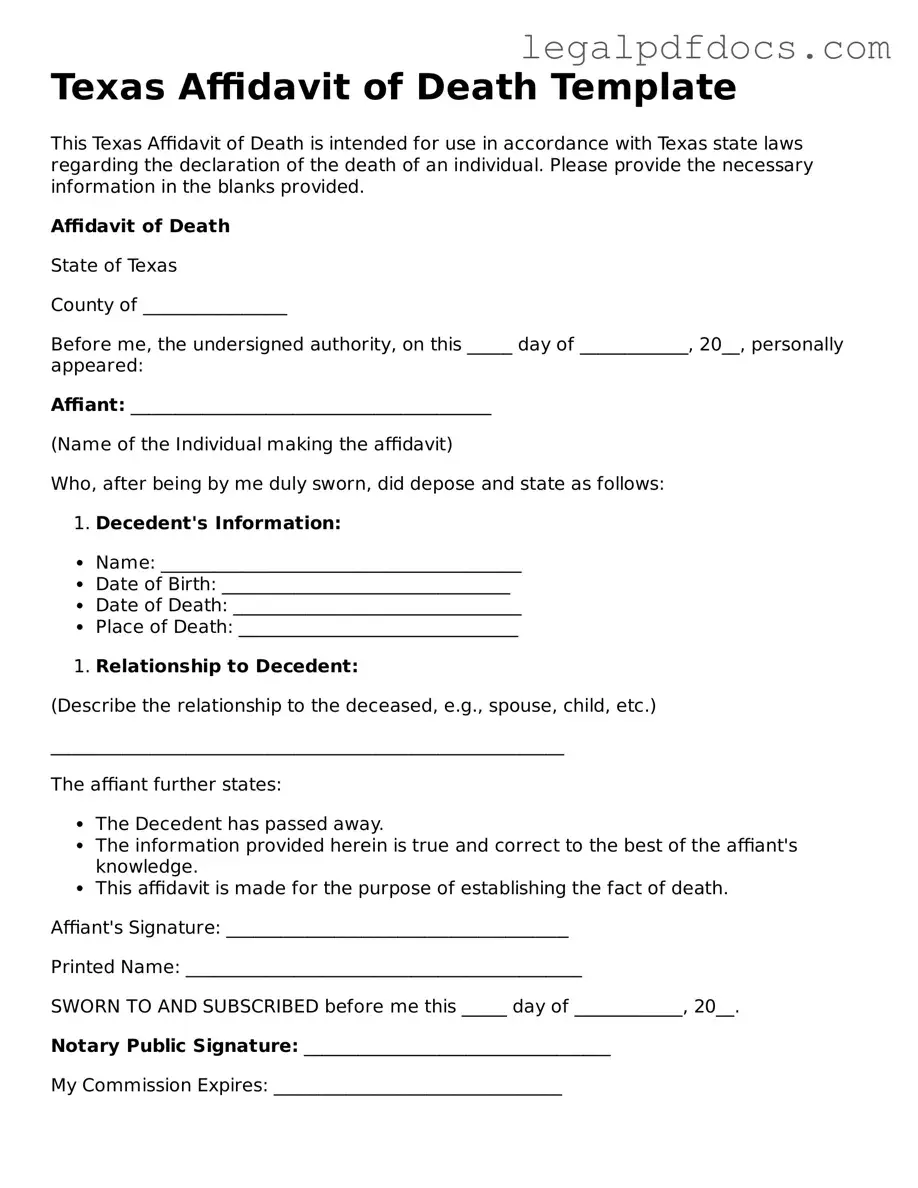Official Affidavit of Death Form for Texas
The Texas Affidavit of Death form is a legal document used to officially declare the death of an individual. This form serves as a crucial tool for settling estates, transferring property, and addressing various legal matters following a person's passing. Understanding how to properly fill out this form can simplify many processes during a difficult time; click the button below to get started.
Open Affidavit of Death Editor Here
